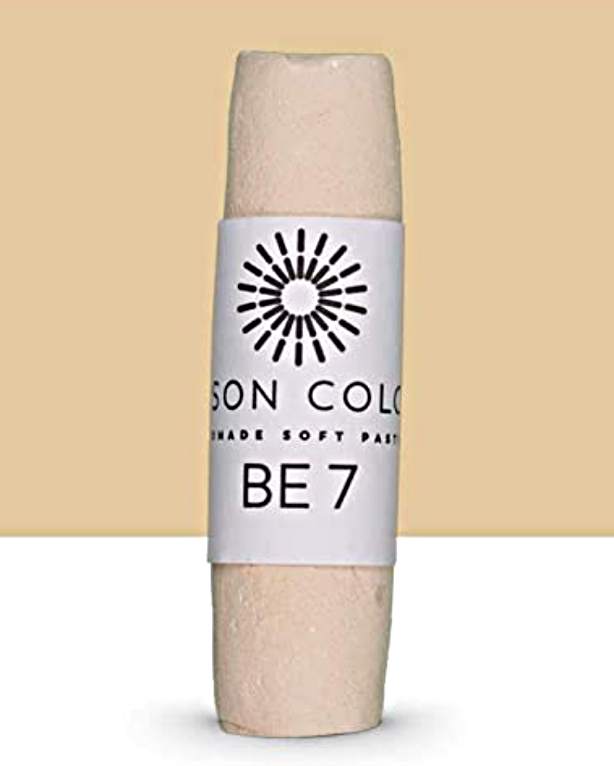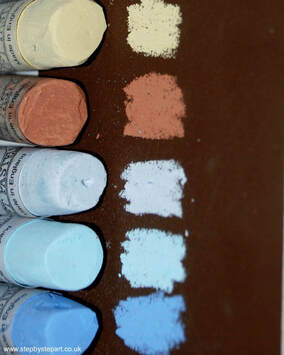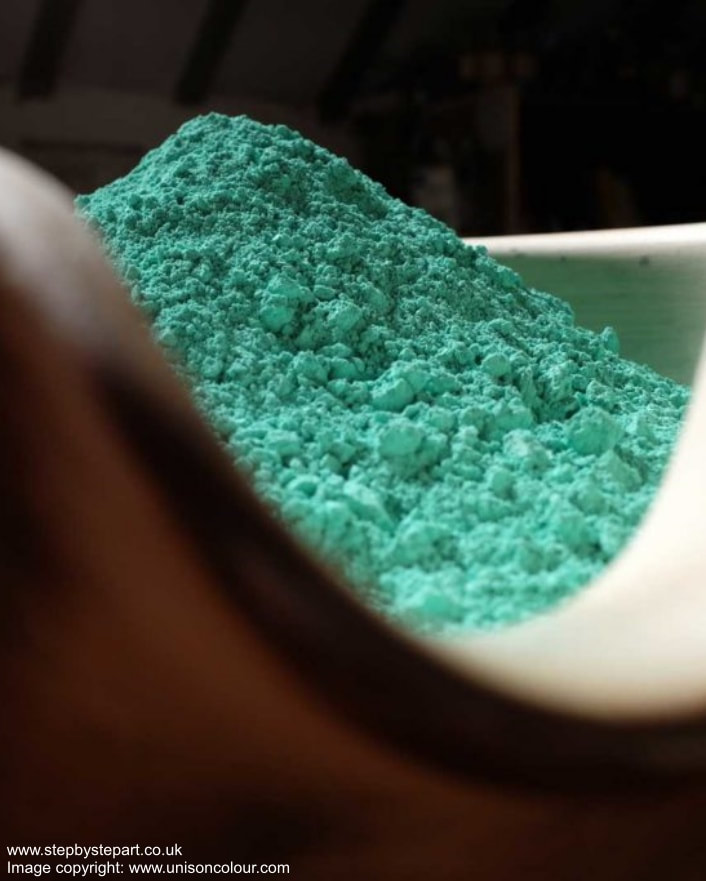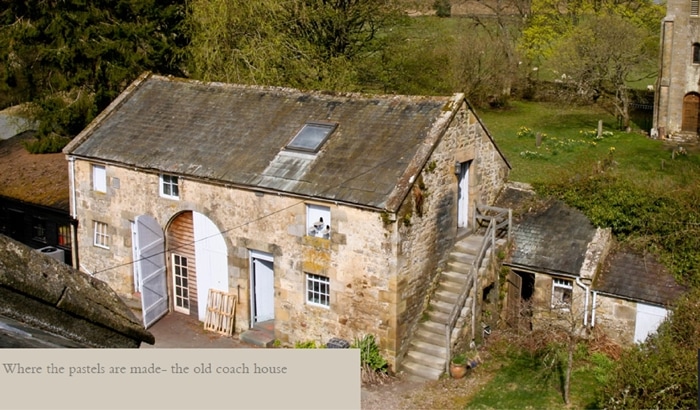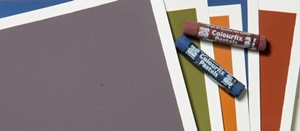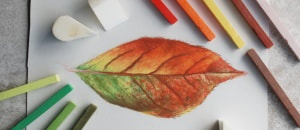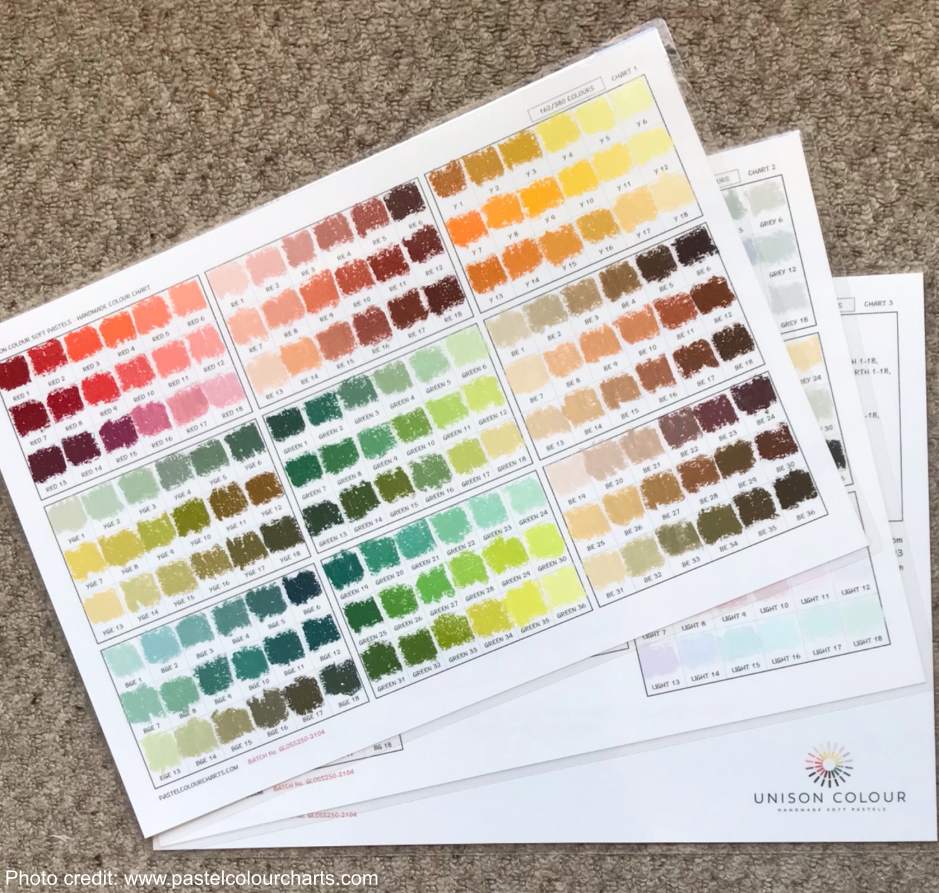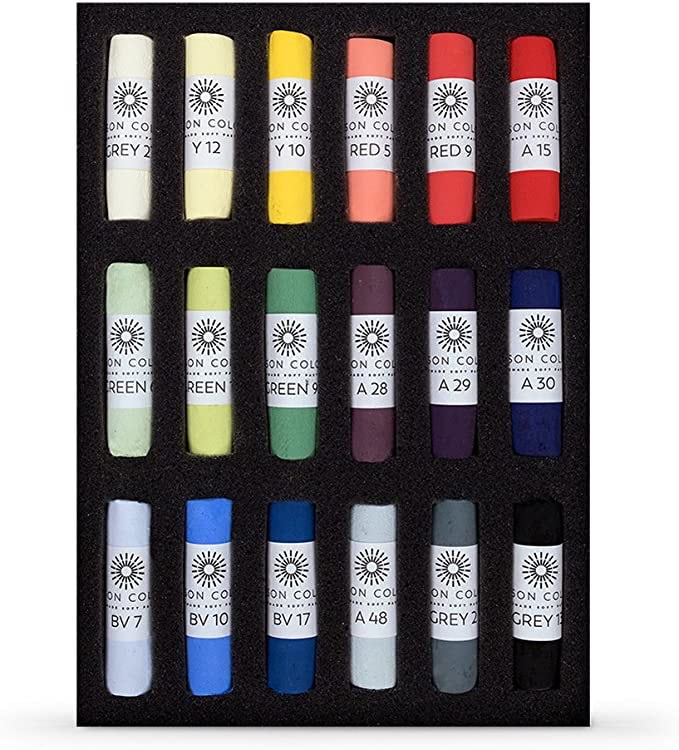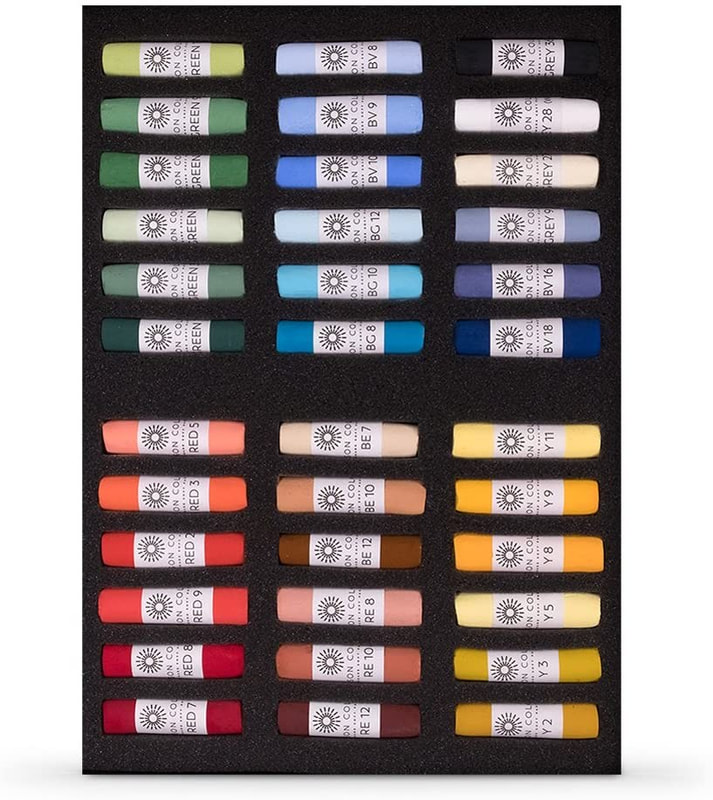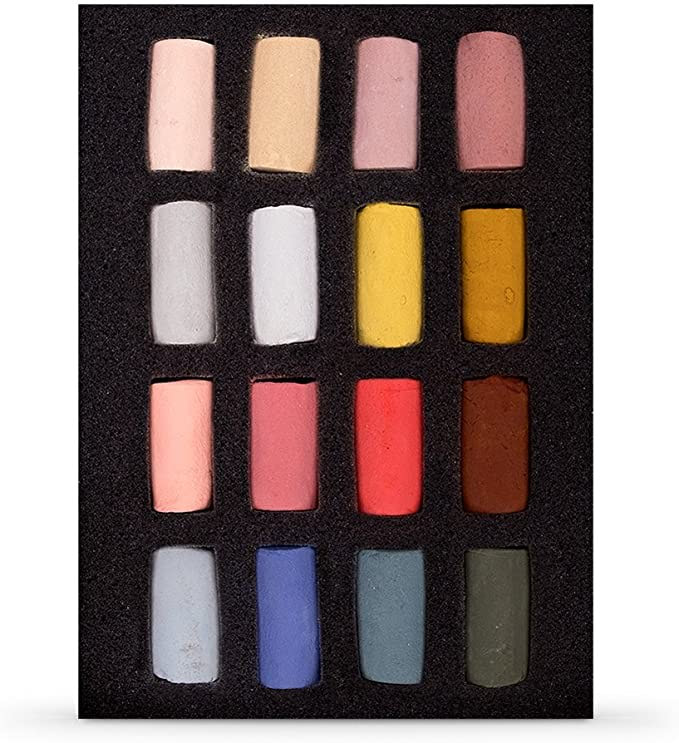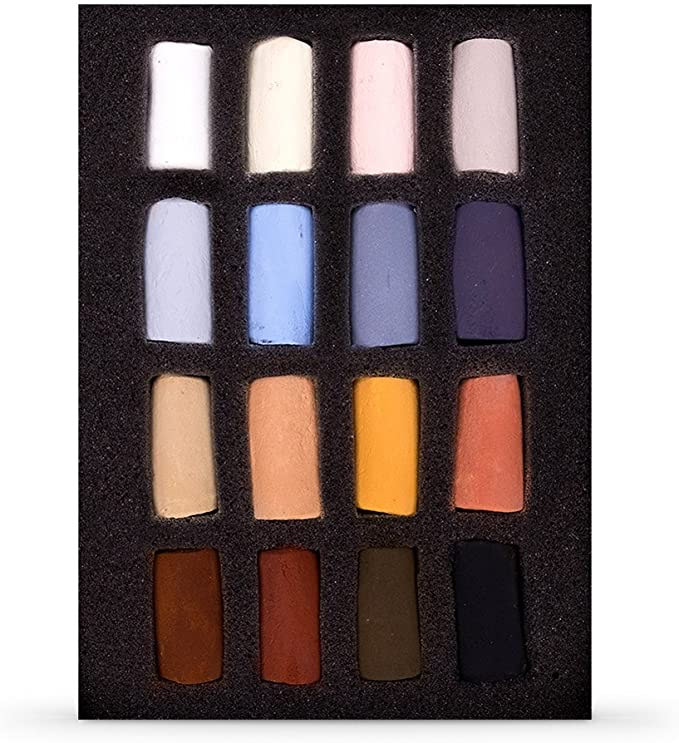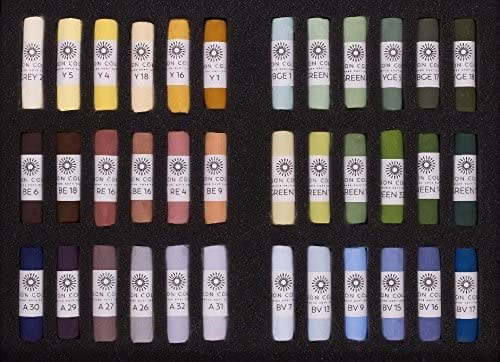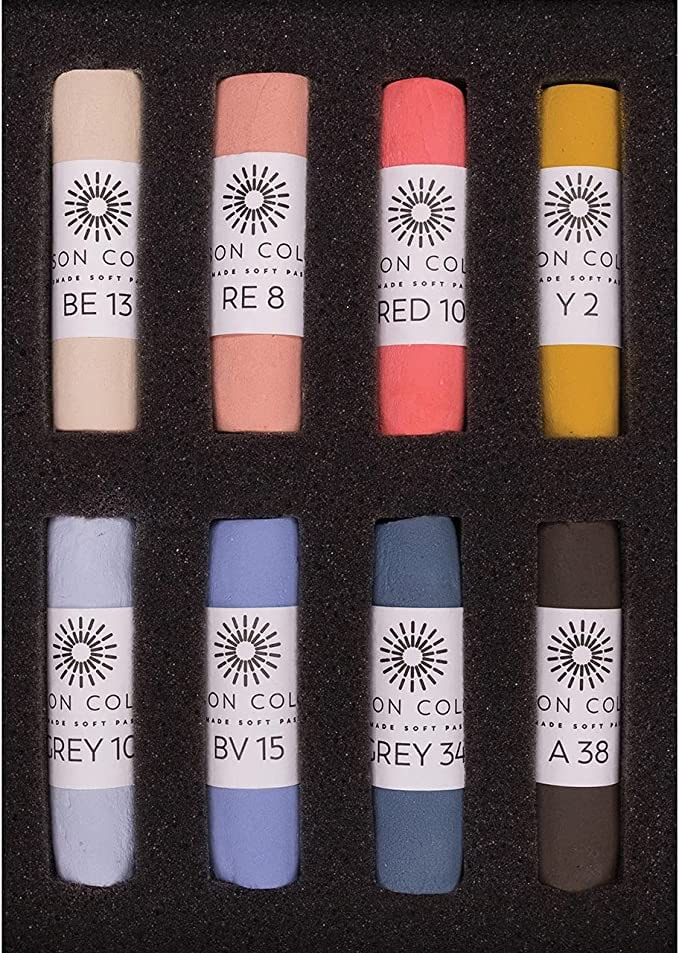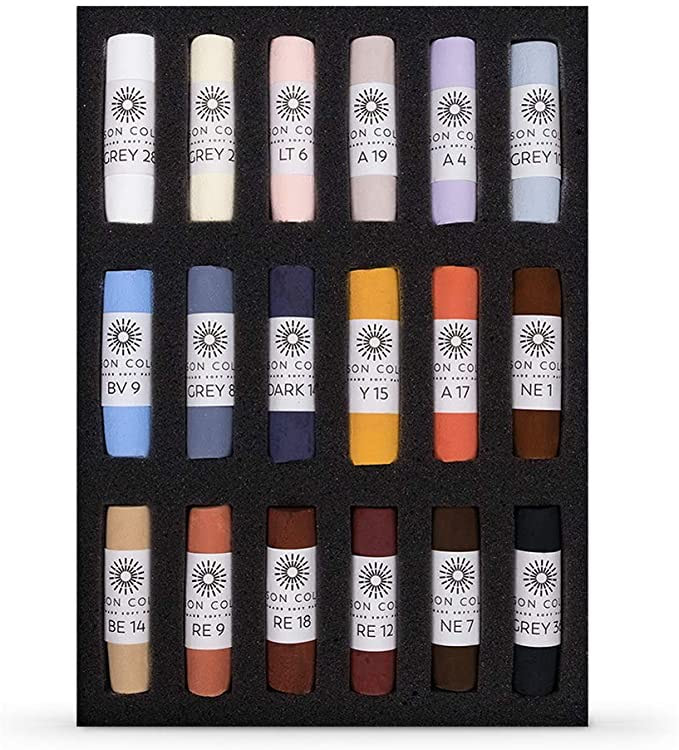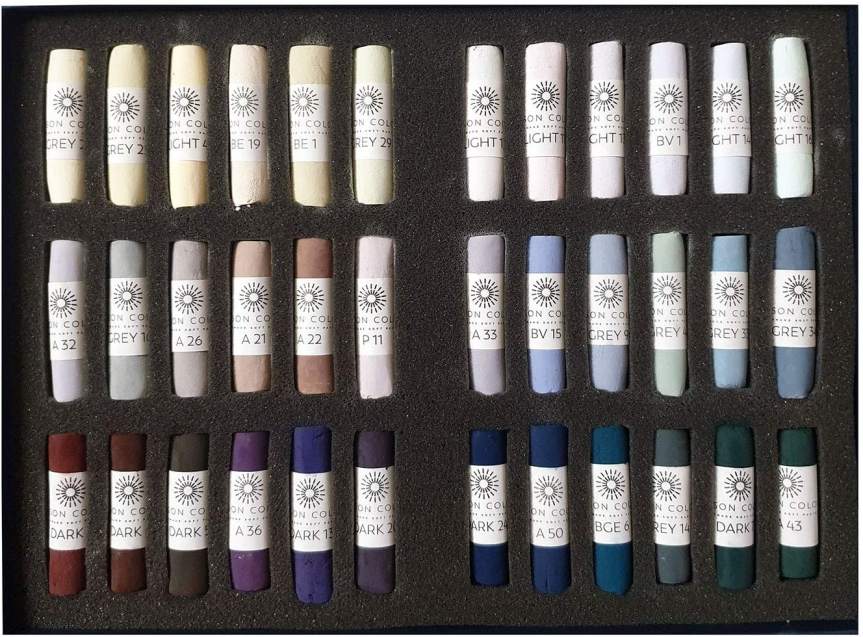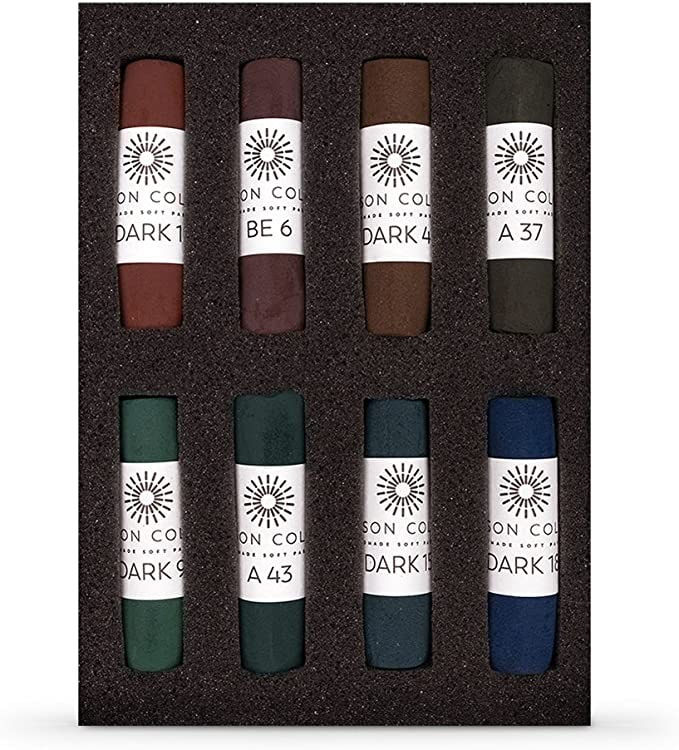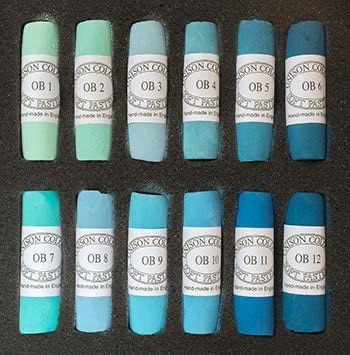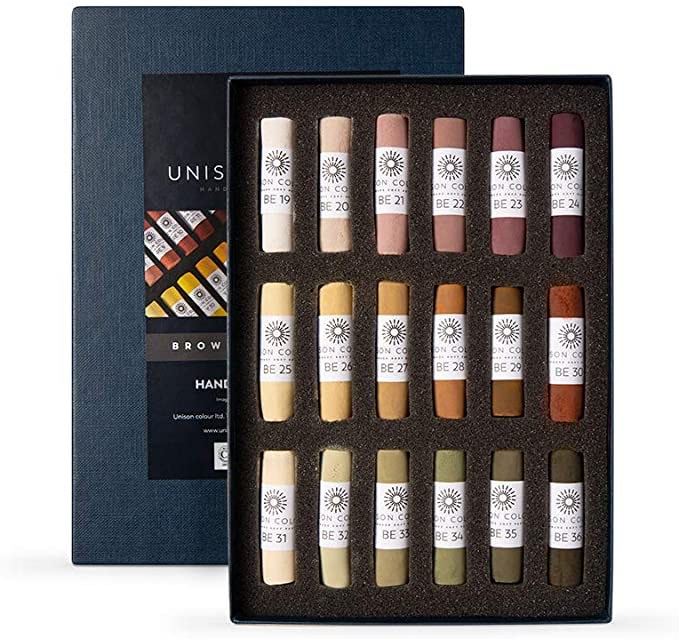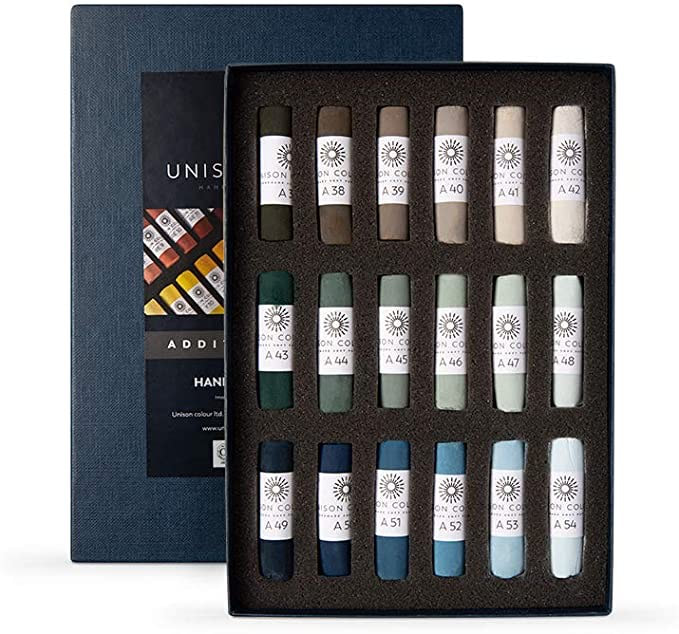About Unison PastelsUnison Colour is a family run business in the heart of the Northumberland National Park, close to the Scottish border in the UK.
Unison pastels are one of the finest, soft pastel ranges available, which both amateur and professional artists love. There is very little binder, so the pastels are more vibrant, due to the pure pigments found in the ingredients. They are easy to apply as a result of their softness and they blend extremely well. They achieve exceptionally smooth transitions, which make them perfect for blemish free skin tones and tonal backgrounds. Professional artists use them in conjunction with other mediums such as watercolour and acrylics. You can create finer details or create tonal washes by mixing them with a little water and applying with a paintbrush. It is very rare that a product that is sold in their millions around the world has actually been created by hand, but every pastel is hand rolled by the dedicated team at Unison. They also work with artists to create new colours. They will also work with them to create new palettes, which are made available for others to purchase. In this article, we explore these pastels in more detail and examine their accomplishments. |
Blendable - Soft & smoothThese pastels are one of the softest around. They allow for the smoothest applications and offers effortless blending. We used four green hues and constructed a blend displaying how well they mix. We used the Pastelmat paper, which is one of our favourites, especially for use with soft pastels. Due to there being very little binder in these pastels, we found that once applied, you can blend them together easily, with little resistance. Applying several layers before you blend, makes this process smoother. Applying further layers on top of previous ones, will strengthen any hues that are subdued during blending. Professional artists can use them in conjunction with other mediums such as watercolour and acrylics. You can create fine details or tonal washes, by mixing them with a little water and applying with a paintbrush.
|
Highly pigmentedDuring many years of meticulous inquiry, John Hersey decided only the finest high-quality pigment produced the acceptable colour and longevity that he required for his artists' materials. Unison still uses the same pigments that John discovered all those years ago. Although cheaper (and more synthetic) alternatives to traditional pigments are constantly being developed, they have so far proven to be both unsuitable and of little use in their exclusively by-hand process. Although there has been some reserve with regards to the use of pigments based on the heavy metals Cadmium and Cobalt recently, these substances prove their value repeatedly. Nothing comes close enough in strength and durability. With careful respect and consideration, they use these remarkable pigments in their pastel formulations and believe that their precious availability warrants appreciation not total avoidance. The pastels contain only pure pigments in a cycle of related hues, instead of adding white or black to the colours. The result is intense, vibrant colour not muddied by the blending of colours. They are mixed to meticulous recipes and are based on traditional pigments such as cadmiums, cobalts and natural and synthetic earths.
Taken from the Unison website |
Lightfast qualitiesUnlike other art mediums, pastels do not have any official lightfast standard, although there are many old pastel drawings that have survived for hundreds of years looking as fresh as the day they were created. Unison pastels have been created using traditional pigments from the UK, USA, Germany, China and Italy, which are incredibly lightfast of at least 98%.
Unison state: "Our pastel colour is faithfully lightfast and again this is due to the real pigment content. Traditional pigments have stood the test of time and show very little evidence of fading or impairment*. " *always store pastels and your artwork in dry conditions!" |
HandmadeFinding a company that makes their own product entirely by hand, especially a pastel made in such large quantities, is very rare.
Unison state; " Every aspect of our manufacturing system is “hand-made”. This gentle process produces a high calibre product, buttery in texture depending on pigment content. Each pastel is an individual so may differ slightly in size and shape, although every care is taken to achieve uniformity. " As their pastels are hand made from a variety of traditional pigments, each have their own characteristics. This can mean that the size does fluctuate a little, and the softness may vary between the different colours. There are 3 sizes available:
|
A short video showing the pastel mixing, rolling and packaging process. Recorded at Unison Colour HQ by the UK art supplies company, Jackson's Art. With sound, but no music or narration. Very relaxing.
Why not follow Jackson's Art YouTube channel, they have many great videos, that cover a plethora of art products, tutorials and artists' stories.
Why not follow Jackson's Art YouTube channel, they have many great videos, that cover a plethora of art products, tutorials and artists' stories.
Characteristics
Hard or Soft: Soft |
Lightfast: Yes |
|
|
ADVANTAGES
* Pure pigment, strong colour application * Huge range of colours and tones * Hand-made, not mass made * Softer application, perfect for transitional backgrounds |
DISADVANTAGES
* Expensive * Soft pastels have minimal binder which creates more dust * Due to their soft nature, you cannot achieve fine detail * Very soft pastels wear faster on abrasive papers |
About Unison pastels
The creator and the company
Unison Colour began in the early 1980's when artist John Hersey was unable to find a quality pastel range. Feeling that factory, mass made pastels just did not offer him the right qualities as many broke easily or simply wasn't consistent in texture and so decided to make his own. For a few years he worked on various methods of production, colour sequences and textures of pigment mixtures to create the pastel much loved by many artists. In 1987 he decided to offer the results to fellow pastellists. He and Kate took the original range of colour sets (then just 117 pastels), and the kitchen dresser, to an art materials show in London. To their surprise there was an immediate interest. Originally the pastels were all made inside the coach house and when sales expanded to the USA, a workshop and packing room were constructed. Unison now hand make over a million sticks each year!
Information and images taken from the official website www.unisoncolour.com
Information and images taken from the official website www.unisoncolour.com
If you wish to find out more about John Hersey and the business, this 8 minute video, narrated by his wife, Kate, provides a peek inside the lovely old coach house where the pastels are handmade. It also tells the story of John and how he started his journey in search for the perfect pastel for his own art, ending in the creation of his own range, thus Unison was born. Well worth a watch for the beautiful views of the National Park in Northumberland (we're biased, as we're based in Northumberland too!)
IN CONVERSATION WITH DAN HERSEY AND JIM LONGMAN FROM UNISON COLOUR
Dan Hersey, chairman and son of Unison Colour founder John Hersey, and Jim Longman, one of their creators, visited the Jackson’s Art studio to talk about the history of the Northumberland based pastels company, and share the reasons why their pastels are regarded as some of the finest in the world.
Dan Hersey, chairman and son of Unison Colour founder John Hersey, and Jim Longman, one of their creators, visited the Jackson’s Art studio to talk about the history of the Northumberland based pastels company, and share the reasons why their pastels are regarded as some of the finest in the world.
|
Dan Hersey is the son of John Hersey, the creator of Unison pastel. Here he speaks about the family business, his father and the importance of the light in Northumberland playing a big part in the creation of the colours. He also explains how important it is that it remains the home of the Unison pastel.
|
Jim Longman explains what's in the pastels, discusses some of his favourite colours and how the pastels are and explains the handmaking process. Find out what 'Dolloping out' means and see the tools used to make the pastels. He also discusses lightfastness and pastel safety.
|
Click here to visit the original blog post at www.jacksonsart.com
Other related articles that may be of interest
Colour charts:
Although there is no 'official' colour chart to be found on the website, there are physical ones. We have done a little research and found handmade colour charts, made to order, which displays all 380 colours. Presented by their colour palette, each chart is coloured in by hand using actual pastel pigment, This allows you to view the true colour, rather than a print version, which is less representative due to the printing process. Hand-made charts, however, do come with a rather hefty price tag, but definitely worthwhile as a one-time purchase. These pastel charts have been designed and handmade by Grand Portraits. Want to purchase your own? Find out more below the images.
You can view the entire colour palette chart below.
You can view the entire colour palette chart below.
|
A set of laminated colour charts, hand made, displaying every colour from the collection. A new, revised design which groups' colours of their range, laminated in matt pouches to help retain the original look and finish of the dry pastel pigment.
If you wish to purchase your own handmade Unison colour chart, you can purchase through the Unison colour website for £35.00* or Jackson's Art, who sell these charts at £30.00* (Excl. P & P) *Prices checked 2023 |
Colour Sets
Below are all the sets that are currently available, in the Unison range. If you are new to pastels, a starter set is usually the best choice, or as a low cost alternative, try the half sticks instead. If you have a specialised subject like portraits, landscapes, botanical, seascapes or animal portraits, there are sets specifically aimed at artists like you. Sets are a good introduction, and at a slightly lower cost than buying each pastel individually, but of course, with 380 colours available, you can extend your own set to suit your own needs.
As Unison work with artists to create new colours and sets, this list will expand over time. We will add new sets whenever they become available.
As Unison work with artists to create new colours and sets, this list will expand over time. We will add new sets whenever they become available.
SAFETY WITH PASTELS
Pastels are classed as non-toxic or low in toxicity. Pigments like Cadmium and Cobalt are found in many mediums, but they are more toxic in 'dust-form', a safety issue which is important only if ingested. This would need to be via extremely large quantities to have an effect on health, so we mention it here purely for awareness.
For protection, ensure you are working in a well ventilated area when using pastels. You may prefer to wear a face mask to avoid breathing in the dust and/or purchase an air purifier. If you have any breathing problems such as asthma, pastels may not be the medium for you. When buying pastel products, always look for the ACMI label (AP or LP). These products have undergone extensive toxicological testing before it is granted the ACMI certification seal.
For protection, ensure you are working in a well ventilated area when using pastels. You may prefer to wear a face mask to avoid breathing in the dust and/or purchase an air purifier. If you have any breathing problems such as asthma, pastels may not be the medium for you. When buying pastel products, always look for the ACMI label (AP or LP). These products have undergone extensive toxicological testing before it is granted the ACMI certification seal.
Article updated: February 2022
